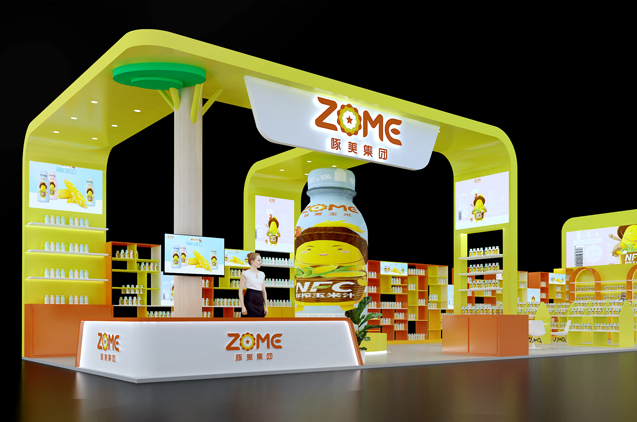Product category
Contact Us
Deep understanding is beneficial for providing you with better quality services
Phone:+86 180 2026 5151
Email:lily@heama-expo.com
Address:Zhongxin Building, No. 15 Yueliangwan Road, Industrial Park, Suzhou City, Jiangsu Province, China
2023-09-26 16:16:30
Shanghai layout design company need to pay attention to what details
A Shanghai layout design company, like any professional design firm, should pay attention to various details to ensure the success of their projects. Here are some important details that such a company should consider:

1. Client's Needs and Goals: Understand the client's specific needs, objectives, and goals for the layout design project. This includes understanding their target audience and the purpose of the space.
2. Budget: Work within the client's budget constraints and provide cost-effective design solutions. Be transparent about costs and any potential additional expenses.
3. Space Functionality: Ensure that the layout design meets the functional requirements of the space. Consider traffic flow, accessibility, and the intended use of each area.
4. Aesthetics: Pay attention to the visual appeal of the layout design. Choose colors, materials, and furnishings that align with the client's brand or vision for the space.
5. Sustainability: Consider eco-friendly and sustainable design practices. Use energy-efficient materials and systems when possible to reduce environmental impact.
6. Compliance: Be aware of local building codes, regulations, and permits required for the project. Ensure that the design complies with safety and accessibility standards.
7. Space Planning: Optimize the space efficiently to make the best use of available square footage. This may involve creative zoning, furniture arrangement, and storage solutions.
8. Technology Integration: Incorporate technology seamlessly into the design, including wiring for audiovisual equipment, data connectivity, and automation systems if necessary.
9. Lighting: Design a lighting scheme that enhances the functionality and aesthetics of the space. Consider natural lighting, task lighting, and ambient lighting as needed.
10. Furniture and Fixtures: Select appropriate furniture, fixtures, and equipment (FF&E) that match the design concept and serve the intended purpose.
11. Branding Elements: If applicable, incorporate branding elements such as logos, signage, and graphics into the layout design to reinforce the client's identity.
12. User Experience: Focus on creating a positive user experience for visitors or occupants. Consider comfort, convenience, and accessibility in the design.
13. Project Timeline: Develop a realistic project timeline that outlines milestones, deadlines, and the construction or installation schedule.
14. Coordination: Collaborate with contractors, architects, engineers, and other professionals involved in the project to ensure a cohesive and well-executed design.
15. Quality Control: Implement quality control measures to ensure that the final design meets the client's expectations and adheres to the approved plans.
16. Communication: Maintain clear and open communication with the client throughout the design process, providing updates and addressing any concerns or changes promptly.
17. Post-Completion Support: Offer post-completion support, which may include addressing any issues that arise after the project is finished or assisting with future modifications.
18. Documentation: Maintain accurate documentation of the design, including drawings, specifications, and records of materials used.
By paying attention to these details, a layout design company in Shanghai can deliver successful projects that meet the client's needs, adhere to local regulations, and create functional and aesthetically pleasing spaces.

1. Client's Needs and Goals: Understand the client's specific needs, objectives, and goals for the layout design project. This includes understanding their target audience and the purpose of the space.
2. Budget: Work within the client's budget constraints and provide cost-effective design solutions. Be transparent about costs and any potential additional expenses.
3. Space Functionality: Ensure that the layout design meets the functional requirements of the space. Consider traffic flow, accessibility, and the intended use of each area.
4. Aesthetics: Pay attention to the visual appeal of the layout design. Choose colors, materials, and furnishings that align with the client's brand or vision for the space.
5. Sustainability: Consider eco-friendly and sustainable design practices. Use energy-efficient materials and systems when possible to reduce environmental impact.
6. Compliance: Be aware of local building codes, regulations, and permits required for the project. Ensure that the design complies with safety and accessibility standards.
7. Space Planning: Optimize the space efficiently to make the best use of available square footage. This may involve creative zoning, furniture arrangement, and storage solutions.
8. Technology Integration: Incorporate technology seamlessly into the design, including wiring for audiovisual equipment, data connectivity, and automation systems if necessary.
9. Lighting: Design a lighting scheme that enhances the functionality and aesthetics of the space. Consider natural lighting, task lighting, and ambient lighting as needed.
10. Furniture and Fixtures: Select appropriate furniture, fixtures, and equipment (FF&E) that match the design concept and serve the intended purpose.
11. Branding Elements: If applicable, incorporate branding elements such as logos, signage, and graphics into the layout design to reinforce the client's identity.
12. User Experience: Focus on creating a positive user experience for visitors or occupants. Consider comfort, convenience, and accessibility in the design.
13. Project Timeline: Develop a realistic project timeline that outlines milestones, deadlines, and the construction or installation schedule.
14. Coordination: Collaborate with contractors, architects, engineers, and other professionals involved in the project to ensure a cohesive and well-executed design.
15. Quality Control: Implement quality control measures to ensure that the final design meets the client's expectations and adheres to the approved plans.
16. Communication: Maintain clear and open communication with the client throughout the design process, providing updates and addressing any concerns or changes promptly.
17. Post-Completion Support: Offer post-completion support, which may include addressing any issues that arise after the project is finished or assisting with future modifications.
18. Documentation: Maintain accurate documentation of the design, including drawings, specifications, and records of materials used.
By paying attention to these details, a layout design company in Shanghai can deliver successful projects that meet the client's needs, adhere to local regulations, and create functional and aesthetically pleasing spaces.
